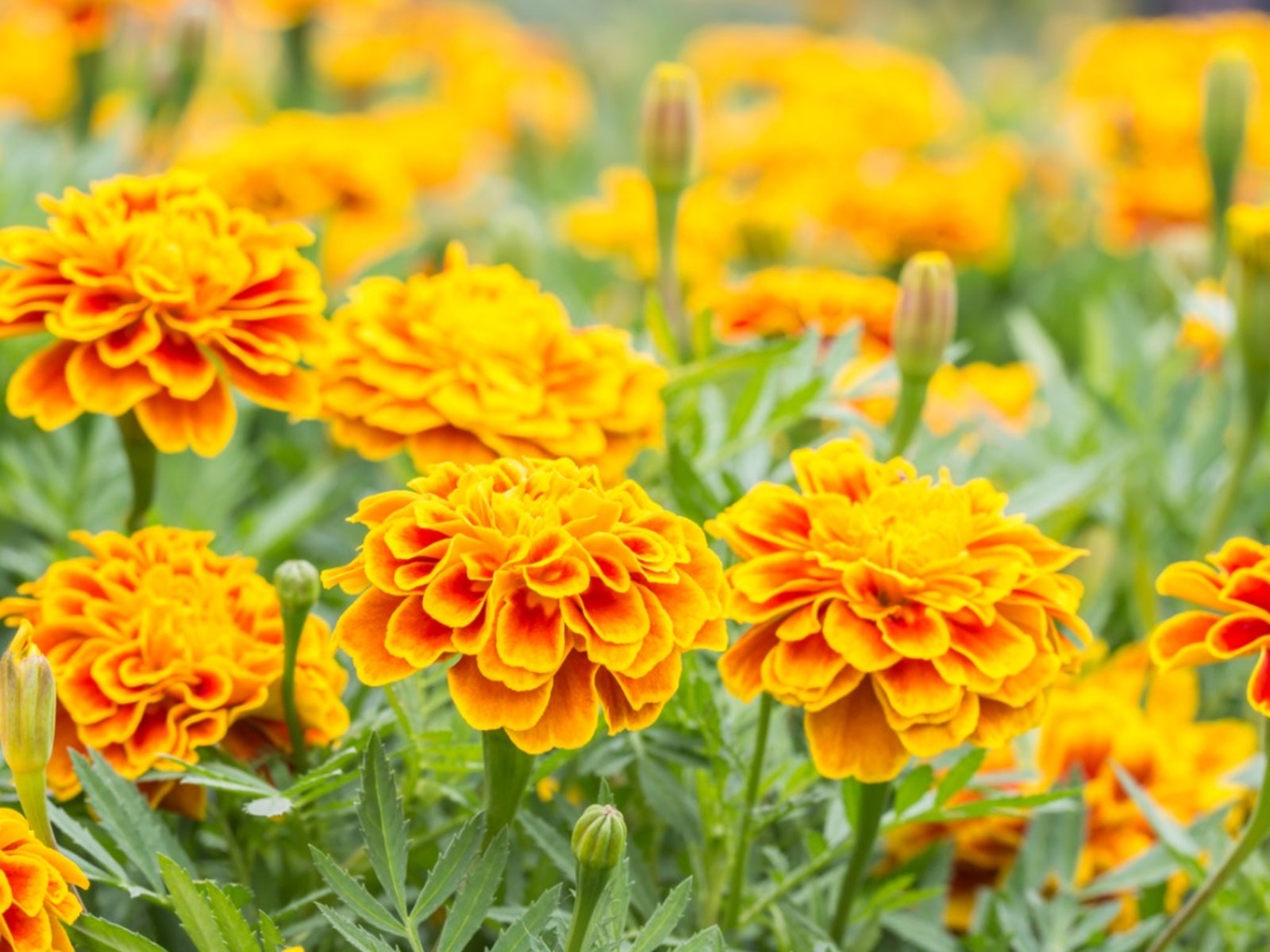Growing Marigold Flowers: How To Grow Marigolds


For many people, marigold flowers (Tagetes) are among the first flowers they remember growing. These easy-care, bright blooms are often used as Mother's Day gifts and growing projects at schools. Even now, you can be growing marigold flowers in your own garden. Let's look at how to grow marigolds.
Different Kinds of Marigold Flowers
Marigolds come in four different types. These are:
- African - These marigold flowers tend to be tall
- French - These tend to be dwarf varieties
- Triploid - These marigolds are a hybrid between African and French and are multi-colored
- Single - Have long stems and look like daisies.
Some people also refer to Calendulas as Pot Marigolds, but they are not related to the flowers most people know as marigolds.
How to Plant Marigold Seeds
While you can buy marigold plants at your local garden nursery, you can also grow your own marigold seeds into plants much more cheaply. In order for your marigolds to be ready for planting outdoors in the spring, you will need to start growing marigolds from seed indoors about 50 to 60 days before the last frost date. Start with a tray or pot filled with damp soilless potting mix. Sprinkle the marigold seeds over the potting mix. Cover the seeds with a thin layer of vermiculite. Cover the pot or tray with plastic wrap and place the tray in a warm spot. The top of the refrigerator works well. Marigold seeds do not need any light to germinate, so you don't need to provide light yet. The next step for growing marigolds from seed is to check the planted marigold seeds daily for germination. Typically, marigolds will take three to four days to germinate, but may take a few days longer if the location is cooler. Once the marigold seedlings appear, remove the plastic wrap and move the tray to a location where the seedlings will get at least five hours or more of light each day. The light can be from an artificial source. As the seedlings grow, keep the potting mix damp by watering from below. This will help to prevent damping off. Once the seedlings have two sets of true leaves, they can be transplanted to their own pots where they can grow indoors under light until after the last frost has passed.
How to Grow Marigolds
Marigolds are a very versatile flower. They enjoy full sun and hot days and grow well in dry or moist soil. This hardiness is one of the reasons that they are often used as bedding plants and container plants. Once marigold flowers are planted, they need very little in the way of care. If they are planted in the ground, you only need to water them if the weather has been very dry for more than two weeks. If they are in containers, water them daily as containers will dry out quickly. Water soluble fertilizer can be given to them once a month, but to be honest, they will do as well without fertilizer as they do with it. You can greatly increase the number of blooms and the blooming time length by deadheading spent blossoms. Dried, spent blossoms can also be kept in a cool, dry place and the seeds inside these flower heads can be used to grow next year's display of fiery orange, red and yellow marigold flowers.
Sign up for the Gardening Know How newsletter today and receive a free copy of our e-book "How to Grow Delicious Tomatoes".

Heather Rhoades founded Gardening Know How in 2007. She holds degrees from Cleveland State University and Northern Kentucky University. She is an avid gardener with a passion for community, and is a recipient of the Master Gardeners of Ohio Lifetime Achievement Award.